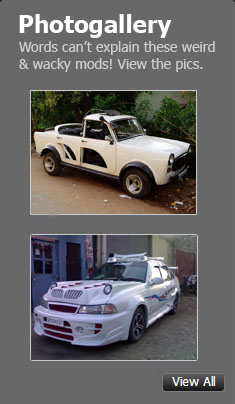News
New Skoda Slavia 2022: Observations after 1 day of driving
The Slavia's road manners are pretty sorted. The straight-line stability is great and the car feels extremely steady cruising at speeds of 100-120 km/h.
Driving the Skoda Slavia 1.0L Turbo Petrol MT
1.0L turbo-petrol engine makes 114 BHP @ 5,000-5,500 rpm and 178 Nm @ 1,750-4,500 rpm:

The Slavia is powered by a 999cc, turbocharged, 3-cylinder, direct-injection petrol engine that puts out 114 BHP and 178 Nm. This engine is paired with either a 6-speed manual (MQ200-6F) gearbox or a 6-speed torque converter automatic (AQ250-6F). The top-end Style variant also gets the 1.5L, 4-cylinder TSI engine which is used in the Kushaq. It's matched to a 6-speed MT and a 7-speed DSG. The engine produces 148 BHP & 250 Nm. In comparison the Honda City's 1.5L naturally-aspirated, 4-cylinder engine makes 119 BHP and the Hyundai Verna's 1.0L, 3-cylinder turbo-petrol engine makes 118 BHP. The Verna's 1.5L, naturally aspirated, 4-cylinder engine produces 114 BHP. There is no diesel engine on offer. It's very sad that VAG has decided not to make its 1.5L TDI BS6 compliant. Those with high usage will be disappointed, especially with petrol now costing over 100-bucks a liter!
The Slavia's 1.0 TSI is the same engine that we saw in the Rapid 1.0 TSI, however in a different state of tune. Right off the bat, the key difference is that in the Slavia, it makes more power. However, while the Rapid was meant to be driven hard, the Slavia is tuned more towards comfort.
Throttle response is satisfactory and the Slavia moves off the line with ease. The engine is tractable and while it isn't dead at low rpms, but there is slight turbo lag. If you really want, you can pull from under 1,000 rpm, but it's only when you cross 1,500 rpm that the motor starts feeling more comfortable. The turbo kicks in at ~2,000 rpm and if you're used to a strong turbo kick, you will be slightly disappointed by the soft power delivery of this unit. Overall, the city driveability is good and you can move about in the city clearing speed breakers in second gear with ease. Combined with a light electric power steering, good ergonomics and excellent all-round visibility, the Slavia is city-friendly.
It is important to keep in mind is if you let the revs drop too low at crawling speeds or over speed breakers, the engine has a tendency to stall. It is easy to stall until you get used to its power delivery characteristics. When it stalls though, all you need to do is press the clutch pedal all the way in and the engine fires back up. This is essentially an extension of the engine auto start/stop feature.
Out on the highway is where you will appreciate the mid-range and the top-end of the engine. Past the 2,000 rpm mark, the engine pulls nice and clean all the way till 5,500. If you're pushing the car hard, this is where you would want to be. A bonus here is that the engine doesn't sound coarse at high revs, in fact, it sounds quite sporty. Even beyond 5,500 rpm, the top-end isn't flat and the engine keeps pulling all the way till 6,600 rpm. Highway cruising is a comfortable affair too in the Slavia and it can do triple digit speeds quite easily. The 6 gear ratios will help you extract maximum fuel efficiency from this motor. For a quick overtake, however, from cruising speeds, you might have to downshift to 4th to get the engine in its powerband. All in all, while this engine may not be lightning quick, it is definitely fast and smooth. Skoda claims a 0-100 km/h acceleration time of 10.7 seconds with this manual transmission.
This 6-speed MT is somewhat of a mixed bag. The throws are short and the gates are well defined which makes it easy to use. However, the gearshifts are on the heavier side and not as slick as the Honda City or even the Maruti Ciaz for that matter. The clutch is quite springy and feels heavy, which is not what you would expect in a petrol sedan. The travel range is on the longer side too which makes it not so user-friendly in bumper-to-bumper traffic.
Noise, Vibration & Harshness (NVH)
The 1.0L TSI is overall a refined motor. Despite being a 3-cylinder engine, the vibrations and excess noise are well controlled. On the move, things are good at regular rpms. It's only when you rev up that the 3-cylinder thrum is obvious. But it’s an enjoyable, sporty note The road and tyre noise are also kept in check. On the other hand, wind noise did creep in at 90 km/h, but it was not excessive.
Mileage & Fuel Economy
If driven with a light foot, the 1.0 TSI MT should give you acceptable FE. Turbo-petrol cars are very sensitive to throttle input though; drive it hard and you'll see the tank needle drop fast. To aid the fuel efficiency, you get Start/Stop system that shuts off the engine when the car is stationary and the gear position is neutral and the clutch pedal is released. Pressing the clutch pedal restarts the engine automatically.
ARAI numbers:
1.0 TSI MT - 19.47 km/l
1.0 TSI AT - 18.07 km/l
Suspension

Ride Comfort
The Slavia comes with a McPherson strut suspension at the front and a twist-beam rear axle. It rides on 16-inch rims and is shod with 205/55 R16 tyres. The recommended tyre pressure is 33 PSI all around with two people on board. Under most driving conditions, the Slavia's ride quality is compliant. At low speeds going over some rough roads, you will appreciate the absorbent nature of the suspension as it keeps you comfy. Body movement is controlled well and the suspension soaks up small potholes with ease. Big potholes do register themselves sharply in the cabin though.
Handling & Dynamics
The Slavia's road manners are pretty sorted. The straight-line stability is great and the car feels extremely steady cruising at speeds of 100-120 km/h. Long road trips should be pretty comfortable in this sedan.
Get to some twisty roads and the Slavia won't disappoint. The light front end makes it easy to attack corners. There is a bit of body roll, but it is well controlled and doesn't feel excessive even when pushing the car hard. This allows you to carry more speed into corners. There's a hint of understeer, but the Slavia manages to hold its line nicely. Our test car was equipped with Goodyear Assurance Triplemax 2 tyres and they worked fine for the power on offer.
Steering
The EPS is light at parking & city speeds which is now the market's preference. For daily driving, this steering works just fine. While it does weigh up nicely as the speed increases, there's no feedback from the steering and it does feel very disconnected. For a car that has good power and also a chassis to complement that power, the steering just feels like the oddball here.
Braking
In this segment, only the Hyundai Verna top-end 1.0 turbo petrol gets all-wheel disc brakes. Just like its sibling Kushaq, the Slavia gets discs at the front and drums at the rear. The brake pedal is well calibrated and feels sharp to use. The braking is powerful and very confidence-inspiring.
Niggles & Problems
Skoda is the first name that pops to mind when we speak of unreliability and bad after-sales experiences. Truth is, many owners have suffered multiple breakdowns, especially with the DQ200 DSG gearbox. Do note, that the Kushaq has had its share of problems. So don't expect a Toyota or Maruti kind of ownership experience over 5 - 10 years. Take the extended warranty without a second thought, and be sure to get the car serviced on time. For its part, Skoda is trying to improve its brand image with maintenance packages etc., but the dealers are the same, the cars are complicated & parts are expensive. Skoda's 4-year maintenance package costs Rs. 24,499, which is a good deal as it includes the cost of spares, engine oil and labour charges.
Continue reading the discussion on the 2022 Skoda Slavia on our forum.



















